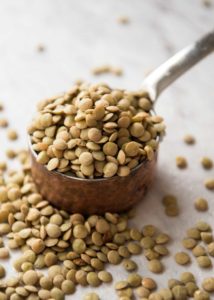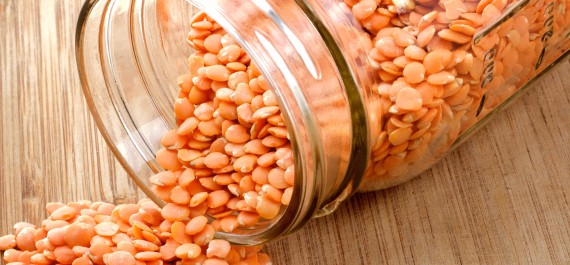Lentil (Lens Shaped Seeds) – Health Benfits You Should Know
What is Lentil?
Lentil is edible pulses or seeds that belong to the legume family. These mostly consist of two halves covered in a husk. Both the seeds are lens-shaped. They are also one of the oldest known sources of food, dating back more than 9,000 years.
Lentils can be consumed with or without the husk. The husk contains the highest amount of dietary fiber. Some of the popular kinds of lentils include black lentils, red lentils, brown lentils, mung bean, yellow split peas, yellow lentils, macachiados lentils, French green lentils, black-eyed pea, kidney beans, soya beans, and many more varieties.
Lentils with a high protein content are considered a cheap source of protein. They are a rich source of essential amino acids like isoleucine and lysine. They are also a good source of micronutrients such as vitamins and minerals.
India has the largest number of vegetarians and lentils can be a substitute for meat in supplying the required protein. One very good way to have lentils is after they have sprouted because sprouted they contain methionine and cysteine. These two amino acids are very significant in muscle-building and strengthening of our body. Methionine is an essential amino acid that is supplied through the food, and cysteine is a non-essential amino acid that can then be synthesized.
Lentil Health Benefits
Protects Heart Health
These are one of the best sources of soluble fiber, which makes them very beneficial for lowering cholesterol and preventing heart disease. Diets high in lentils prevent hypertension and tend to produce more favorable cholesterol levels than diets lower in lentils. Maintaining healthy cholesterol levels reduces damage done to your arteries and prevents dangerous plaque buildup, which greatly lowers your risk of having a heart attack or stroke.
They are also very low in both fat and sodium, other key factors that make up a heart-healthy diet. Diets lower in sodium favor healthy blood pressure levels, as do the many nutrients that lentils provide like folate, potassium and magnesium. Folate can help to lower homocysteine levels, which is known to be a serious risk factor for heart disease. Magnesium and potassium help improve circulation and carry adequate oxygen and nutrients around the body.
Promotes Digestive Health
It contain high levels of dietary fiber which helps to promote regular bowel movements. The high level of insoluble fiber found in lentils absorbs water in the digestive tract, swelling up and carrying waste out of the digestive tract.
This makes lentils a great digestive regulator and helps prevent constipation, IBS, inflammatory bowel diseases, diverticulitis and even diarrhea.
Control Blood Sugar Levels
They trap glucose from carbohydrates and slows down digestion. It can help stabilize blood sugar levels, which is important for preventing energy dips, mood changes, and serious conditions like diabetes, insulin resistance or hypoglycemia.
Get Top Quality Horse Gram
How to Buy – Lentil
There are many different kinds of lentils available in markets, with colors ranging from brown to green, to yellow to red.
The type of lentils you should buy depends on what you’re using them for. Since different types have varying consistencies and tastes. Lentils with husks remain whole when cooked. And more hearty compared to lentils without husks, which tend to disintegrate into a thick pure. But since all types taste somewhat similar and provide roughly the same nutrients, you can easily sub one type out for another whenever need be.





















